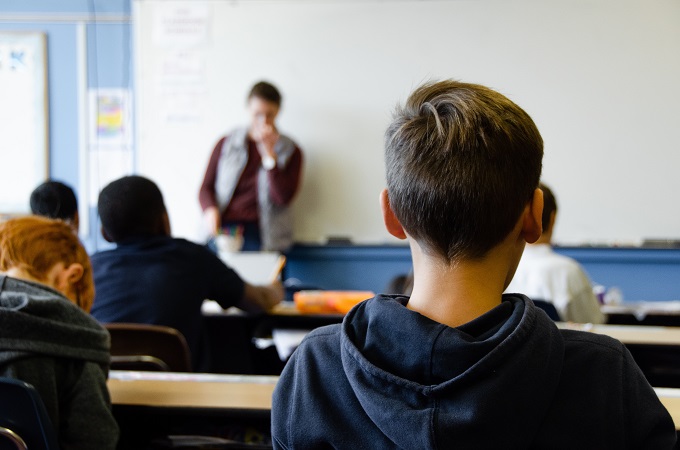
Photo by Taylor Wilcox on Unsplash
<p>Launched in March by the UN Educational, Scientific and Cultural Organization (<a href="https://en.unesco.org/" target="_blank" rel="noopener noreferrer">UNESCO</a>), UN Children’s Fund (<a href="https://www.unicef.org/" target="_blank" rel="noopener noreferrer">UNICEF</a>), World Food Programme (<a href="http://www1.wfp.org/" target="_blank" rel="noopener noreferrer">WFP</a>) and World Bank, the Coalition works to foster inclusive learning opportunities.</p>
<p>“Rising inequality, poor health outcomes, violence, child labour and child marriage are just some of the long-term threats for children who miss out on school”, said UNICEF Executive Director Henrietta Fore. “Unless we prioritise the reopening of schools – when it is safe to do so – we will likely see a devastating reversal in education gains.”</p>
<p>Indeed, the adverse effects of school closures on children’s safety and learning are well documented.</p>
<h3>Millions rely on schools for food</h3>
<p>In the poorest countries, children often rely on schools for their only meal of the day. David Beasley, World Food Programme Executive Director explained that with many schools now closed, 370 million children are missing out on these meals, as well as the health support they normally receive. “When schools reopen, it is critical that these meal programmes and health services are restored,” he said.</p>
<p>The agencies are urging Governments to assess the benefits of classroom-based instruction compared to remote learning, and risk factors related to reopening of schools. In those calculations, they note the inconclusive evidence around the infection risks related to school attendance.</p>
<p>While far from straightforward, the decision of when and how to reopen schools should be a priority. “Once there is a green light on the health front, a whole set of measures will need to be in place to ensure that no student is left behind”, said UNESCO Director-General Audrey Azoulay.</p>
<h3>Right to education</h3>
<p>The guidelines provide all-round advice for Governments and partners to facilitate reopening, she said. “We share one goal: to protect and advance the right to education for every learner.”</p>
<p>In terms of policy, the guidelines recommend having clear directives in place for school opening and closure during public health emergencies. Expanding equitable access for marginalised and out-of-school children is also important, as are efforts to standardise remote learning practices.</p>
<p>They also recommend addressing the impact of <a href="https://www.un.org/coronavirus" target="_blank" rel="noopener noreferrer">COVID-19</a> on education and investing in education systems to stimulate recovery and resilience.</p>
<h3>Soap and water</h3>
<p>In the area of safety, they advise ensuring conditions are in place to reduce disease transmission and promote healthy behaviour. This includes access to soap and clean water for safe handwashing and protocols on social distancing.</p>
<p>Practices that compensate for lost instructional time, strengthen teaching methods that work, and build on hybrid learning models are also covered, as are ways to ensure students’ wellness and protection, including through the provision of essential school-based services such as healthcare.</p>
<h3>Focus on ending marginalisation</h3>
<p>Throughout, the guidelines prioritise the most marginalised. They cover how to expand school opening policies and practices to those who are often excluded –particularly displaced and migrant children &#8211; by making critical communications available in relevant languages and accessible formats.</p>
<p>&#8220;Once schools begin to reopen, the priority becomes reintegrating students into school settings safely and in ways that allow learning to pick up again”, said Jaime Saavedra, World Bank Global Director for Education.</p>
<p>“To manage re-openings, schools will need to be logistically prepared with the teaching workforce ready”, he said. That includes plans specifically to support learning recovery of the most disadvantaged students.</p>
<p>In the end, schools must look at how they can “reopen better”. The agencies say the best interests of children and overall public health considerations – based on an assessment of associated benefits and risks to education, public health and socioeconomic factors – must be central to these decisions.</p>

Teacher guide for the new PAT tuhituhi | writing assessment for Years 5 to 10…
Banning AI won’t cut it, says one science teacher. So how can schools and teachers…
Are stressed teachers contributing to the dysregulation we see in classrooms? Rebecca Thomas asks in…
Henbury School Principal Sarah Corry offers a candid, heartfelt insight into leadership burnout, resilience, and…
Lithuania will be providing free AI technology to every secondary school in the country.
NZEI Te Riu Roa is considering legal action against the government for the disestablishment of…
This website uses cookies.